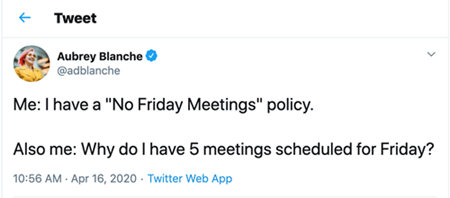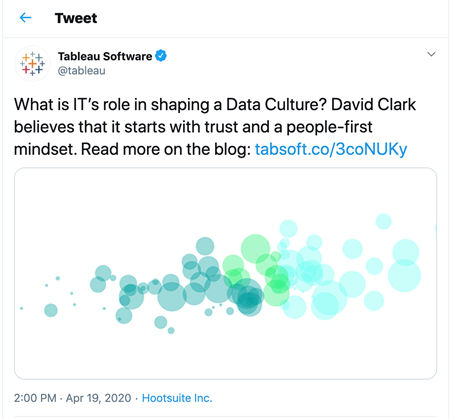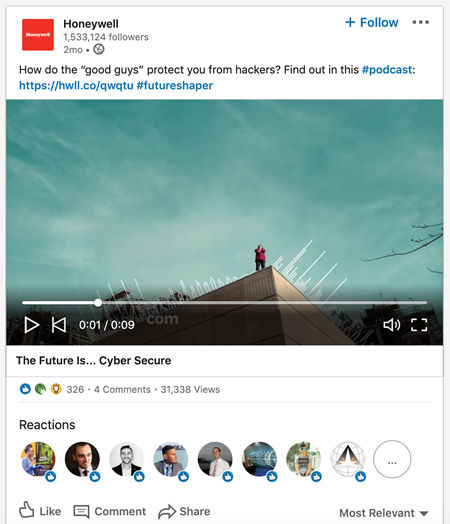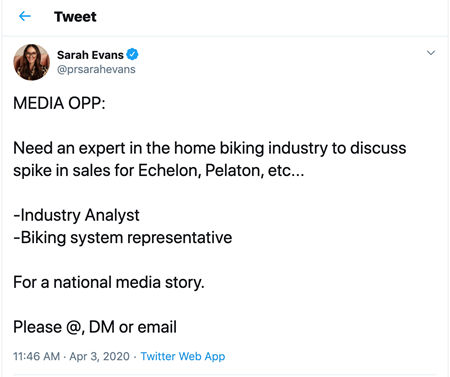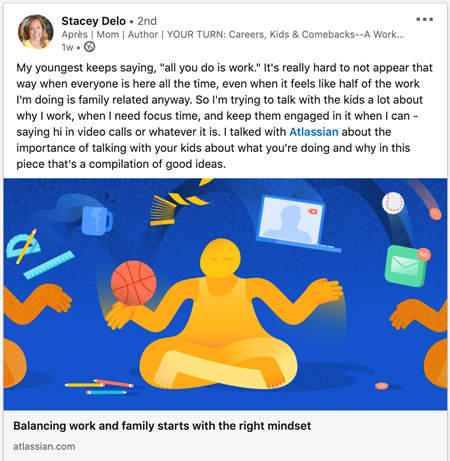Social media has been an essential part of marketers’ media mix for over a decade.
Fully 91% of B2B content marketers in North America use social media for organic content distribution, and 95% among those marketers use LinkedIn, 86% use Twitter, and 84% use Facebook.
And in addition to formal social media staff roles, companies are building employee advocacy programs to expand the reach and authenticity of their content on social media.
To write engaging social media copy on behalf of a business-to-business brand, read on for a couple of principles for engagement along with tried-and-true tips and social media tropes that connect with audiences.
Social Media Engagement: Strike the Right Balance
First and foremost, you want to provide value to your social media audience:
- Are you sharing tips to help them in their day jobs?
- Sharing stories to inspire them on their journey?
- Sending memes and GIFs to give them a laugh and lighten their day?
Think: “What do they get out of following me and consuming the content I create and curate?”
Most companies strive to educate and empower with their content. Sometimes they do that using humor, other times they use straightforward tutorials or guides; whatever approach you choose, you should always give readers something they can use.
Second, no matter what type of content you choose to share, you want to strike the right balance among various actions: being helpful, piquing interest, sounding smart, and being authentic.
Many of us get it wrong:
- We give away the entire point of the article in the feed, so readers have no need to click over and read the article. This is bad if you’re optimizing for CTR, as most brands do, or optimizing for deeper conversation, as most individuals do.
- Or we don’t say anything to entice the reader to click: A generic, “Good article” doesn’t tell the reader WHY it’s good, WHAT they’re about to read, or HOW it will educate, inspire, or entertain them.
- Or we may come across as condescending by framing every article as “required reading” for certain groups, or “we’ve got this all figured out, but here’s a primer for the people who haven’t caught on yet.”
- And some of us go the opposite direction, being too self-deprecating—so much so that it’s uncomfortable to read: “I’m always a work in progress and constantly needing to learn about this topic”; “I know I’ll never get there so it’s always helpful to learn from others who are so much better than me.”
You can be helpful even as you’re piquing interest. And you can share your expertise and express down-to-earth humility without sounding like a know-it-all or a downtrodden newbie.
10 Tropes to Help You Write Engaging Social Media Copy
Though your tone and word choice will differ if you’re sharing from a company feed vs. a personal account, you’re still trying to reach humans with your posts, so be human.
Choose the copy formulas from the following that feel most authentic to you, and track your results to see which tactics work best to engage your audience or network.
1. Pull a quote directly from the article you’re sharing
This is one of the easiest ways to grab the audience’s attention. As you read the article, note sections or phrases that jump out at you. Simply copy and paste the interesting section verbatim into the description area of the social media post.
2. Use all-caps, single-word agreement or disagreement
We’ve all seen the scenes in the movie where someone yells, “Preach!” or “Amen!” or “Hear hear!” It’s a quick, powerful verbal statement that something resonates. This same outburst tactic is also effective when writing on social media, and it works for both agreement and disagreement.
Popular words are YES, THIS, TRUTH, YUP, NOTED, NOPE, NOOOOO, and NAH.
3. Express cliché or popular agreement or disagreement sentiment
This trope is closely related to the single-word all-caps sentiment, but it uses phrases or memes that are common in pop culture.
For example, ” Louder for the people in the back,” “All. Of. This.,” “so much this,” “Well played, Author, well played!,” “Here for it,” and “hard pass” are great ways to show how you relate to the content you’re sharing.
4. Reference feelings
Some articles are inspiring or surprising or delightful, and some events make you feel proud, honored, or shocked. There’s even a shorthand hashtag to share how something affects you, #tfw, which stands for “that feeling when…”
Other phrases in this trope are “when a post hits a little too close to home,” “all the feelz,” “sometimes an article hits you square between the eyes,” “feels like this was written just for me,” “timely piece!,” “thrilled/honored/excited to see/be included/attend.”
5. Summarize a key takeaway or insight from the article
Summarize the main thing the article taught you or the way it applies to a current problem or situation you’re facing. This tip is usually best for long-form content that covers various areas, problems, or solutions and so might be hard to parse with a quick skim.
6. Give a general reason the article is helpful to read
This description is similar to the key take-away or insight, but differs because it broadly describes the subjects covered in the post: for example, “handy tips on scaling agile,” “great read for marketers looking to overhaul their demand-gen strategy,” or “quick summary of the challenges of migrating to Java 8.”
7. Ask a question
People love to feel smart, and we’re primed to answer when a question is asked of us. Pose a discussion question, start a debate, share a poll to get people talking and keep them engaged directly in the feed. This is also an easy way to tee up content that you want your audience to watch, read, or listen to for the answer.
8. Request help for solving a problem
Need help brainstorming? Looking for more information? Ask your followers for advice or contributions.
9. Use a call to action
Some shares are simply to convey information or give your audience a laugh, but sometimes you want them to do something specific. So, tell them exactly how to interact. Examples are a CTA to “share,” “comment below,” “tag a friend or colleague,” and “give me a like if you agree.”
It’s generally best to use a single CTA for each post so you don’t overwhelm your audience, and it makes it easier to write clear, concise copy.
10. Tell a personal or background story
People want to engage with content that’s relatable to their situations, successes, and challenges. Sharing a funny story about a challenge you faced or a heart-warming tale about making a connection is a good way to gain this type of engagement.
11. Bonus: Combine tropes
Wishing you could single-word agree AND share why? Something hits home AND you want to give a quick preview of the insights? Go ahead! It’s perfectly acceptable to combine these tropes to express the benefit to your followers.
* * *
Refining your tone and understanding what types of description copy are most engaging to your audience or network can take time. No matter which tactics you choose, though, your goal is to provide value to the humans on the other side of the screen.
–
This article first appeared in www.marketingprofs.com
Seeking to build and grow your brand using the force of consumer insight, strategic foresight, creative disruption and technology prowess? Talk to us at +971 50 6254340 or mail: engage@groupisd.com or visit www.groupisd.com/story




